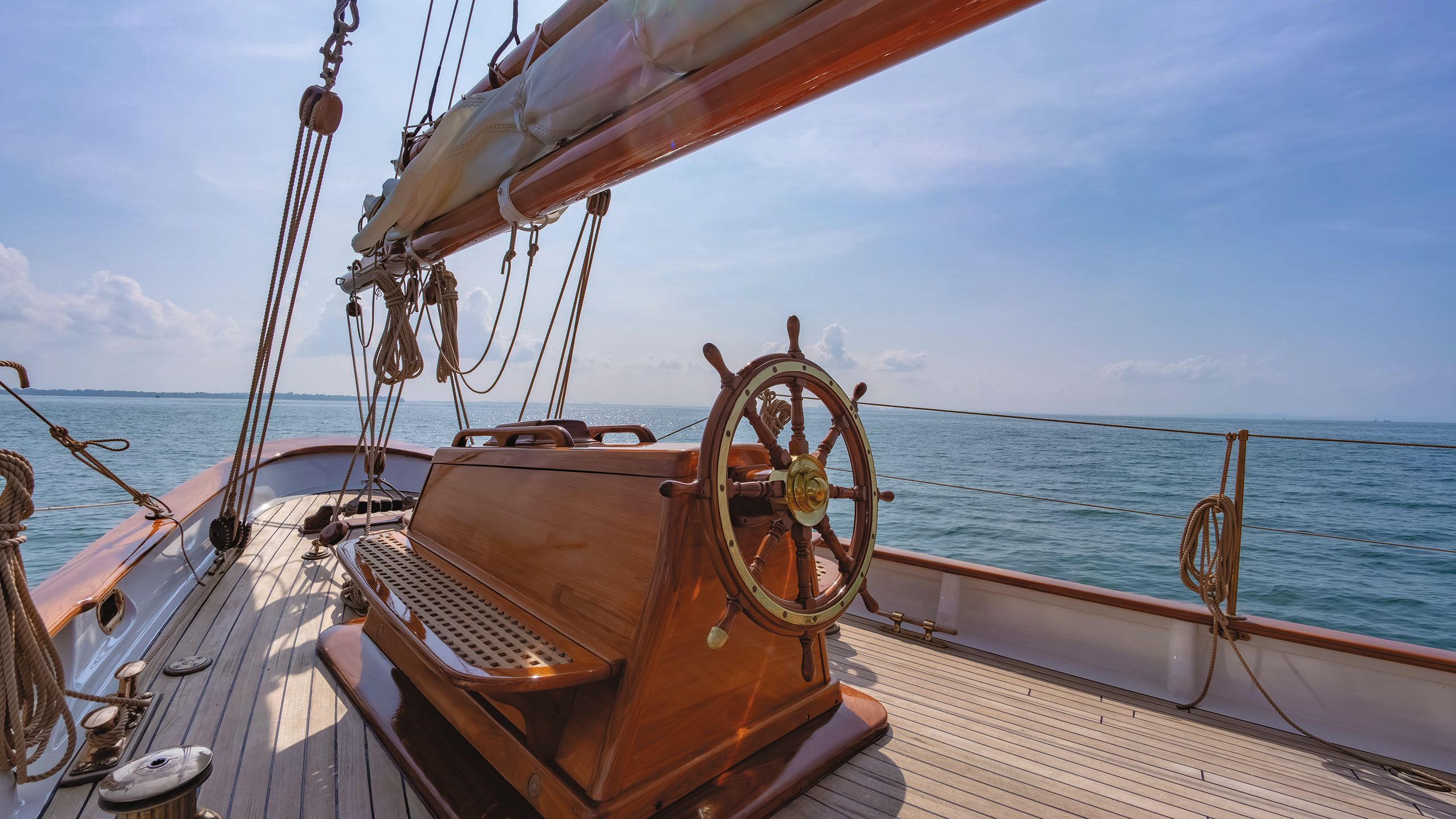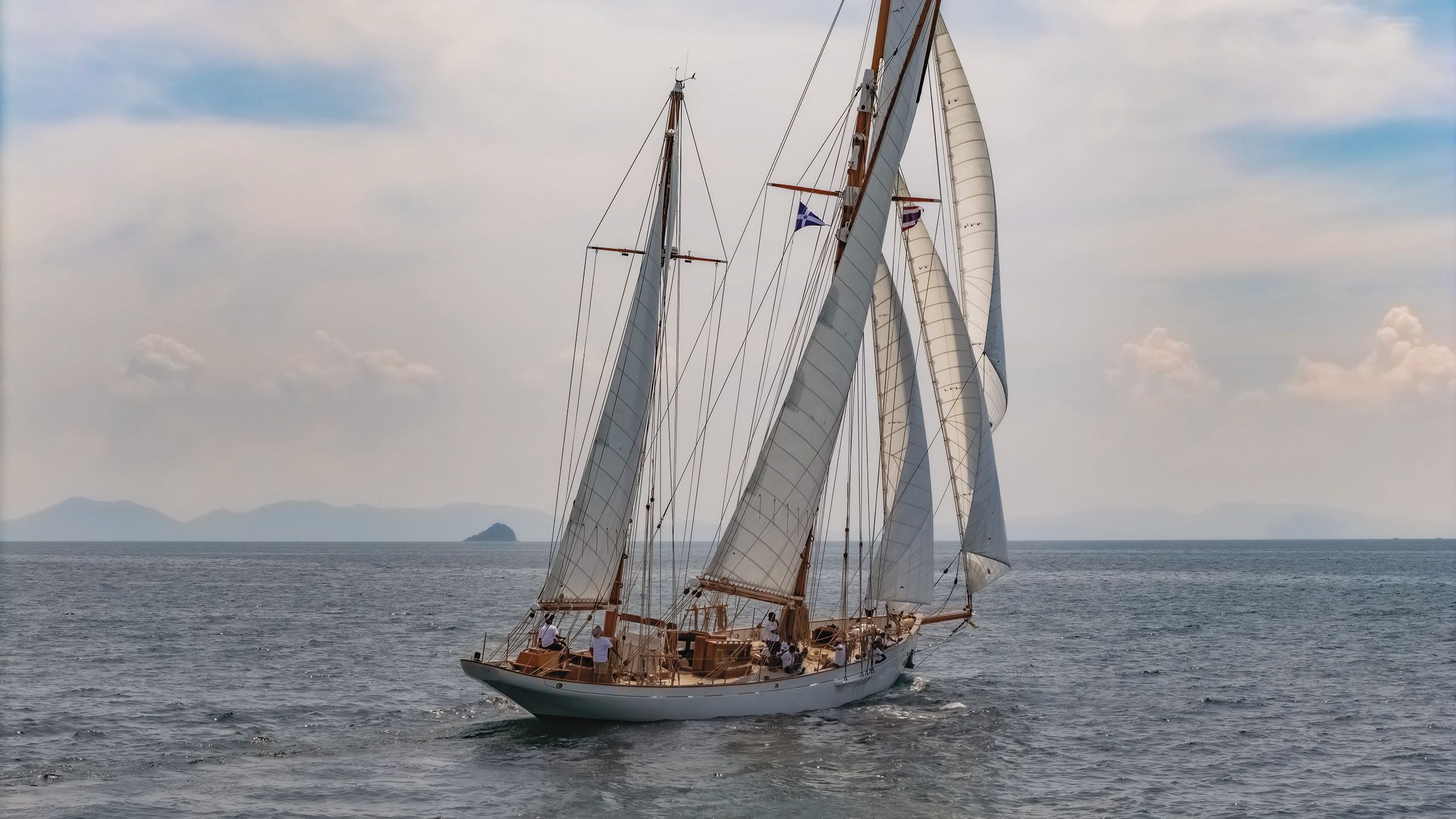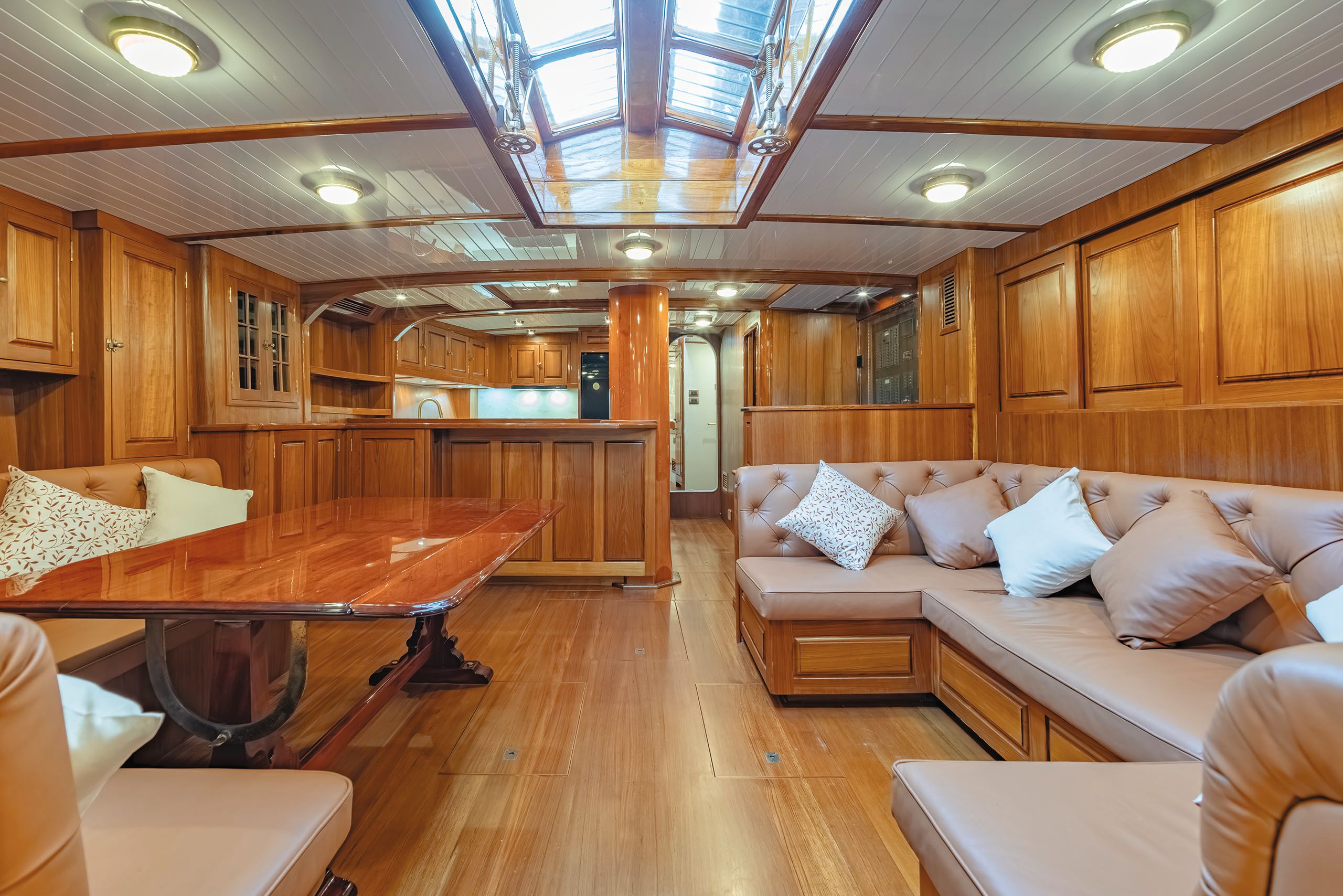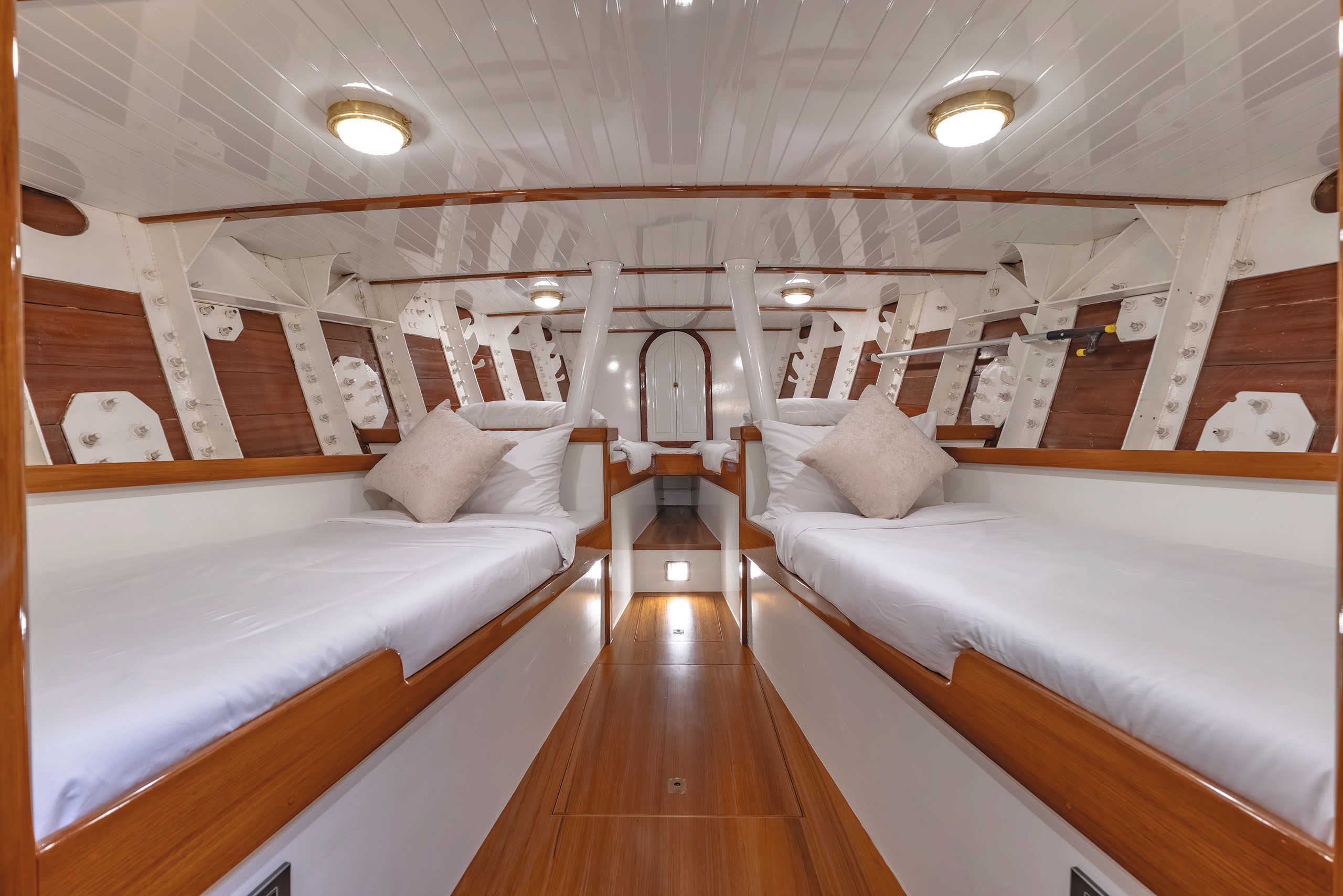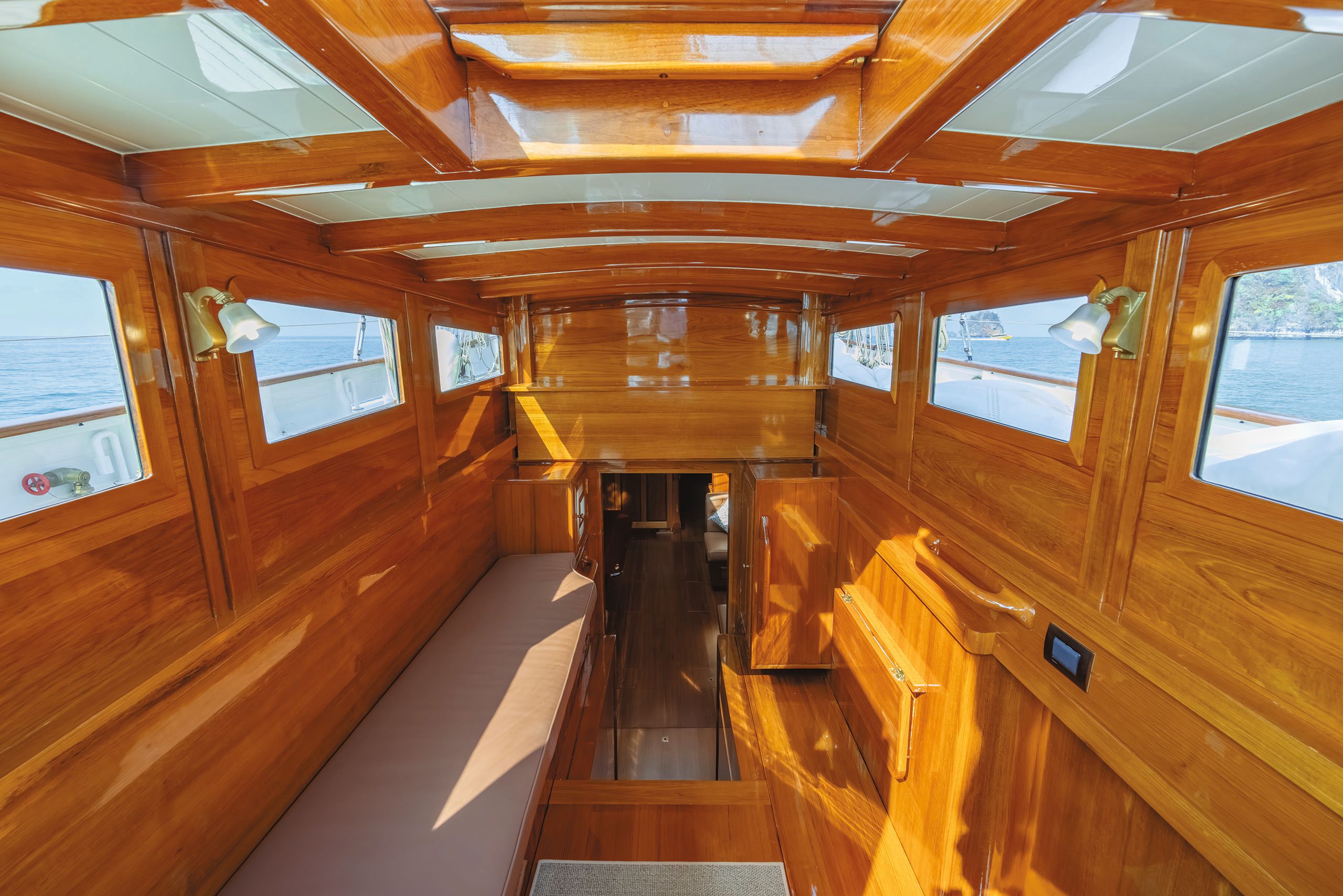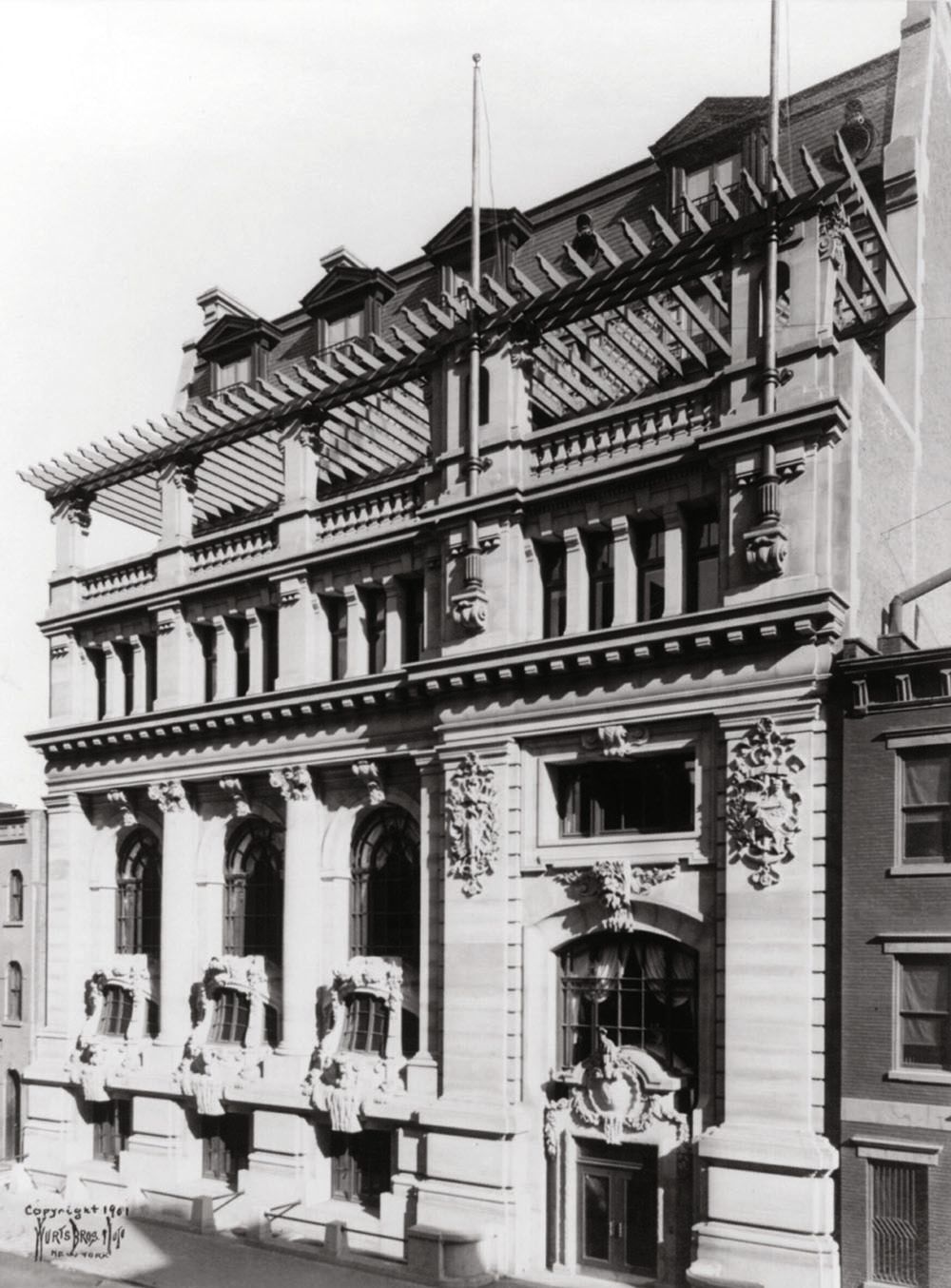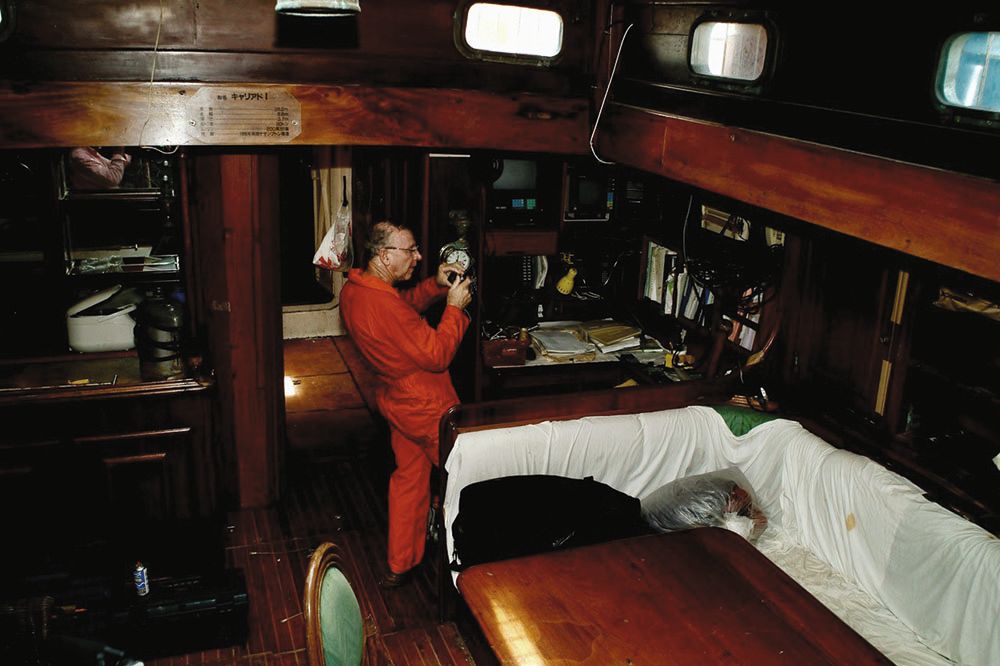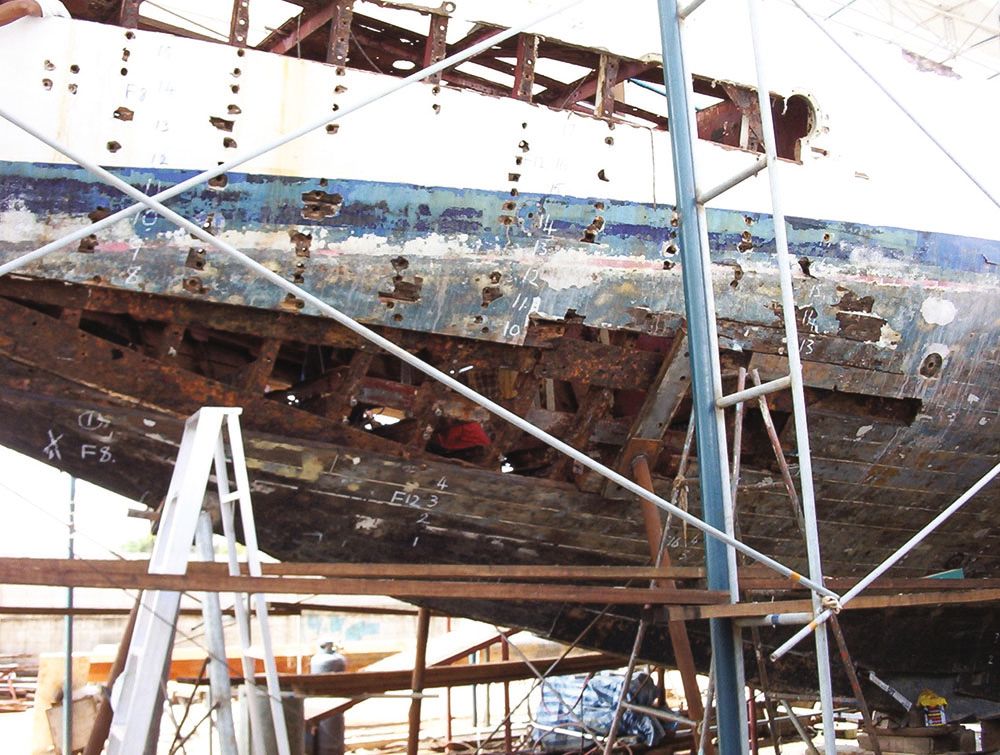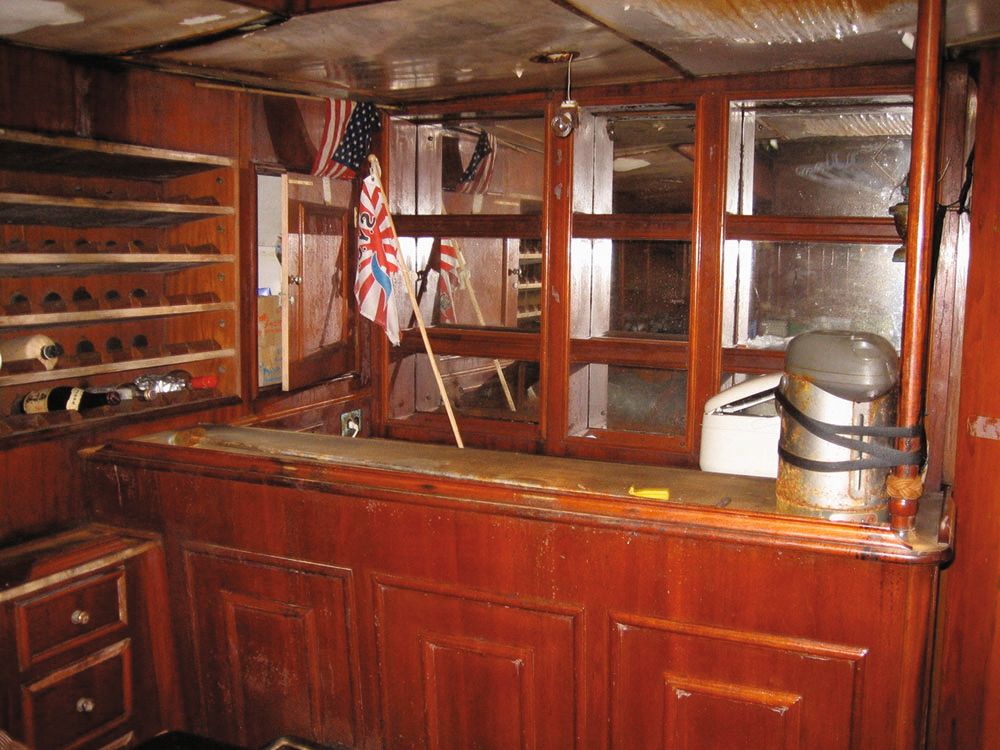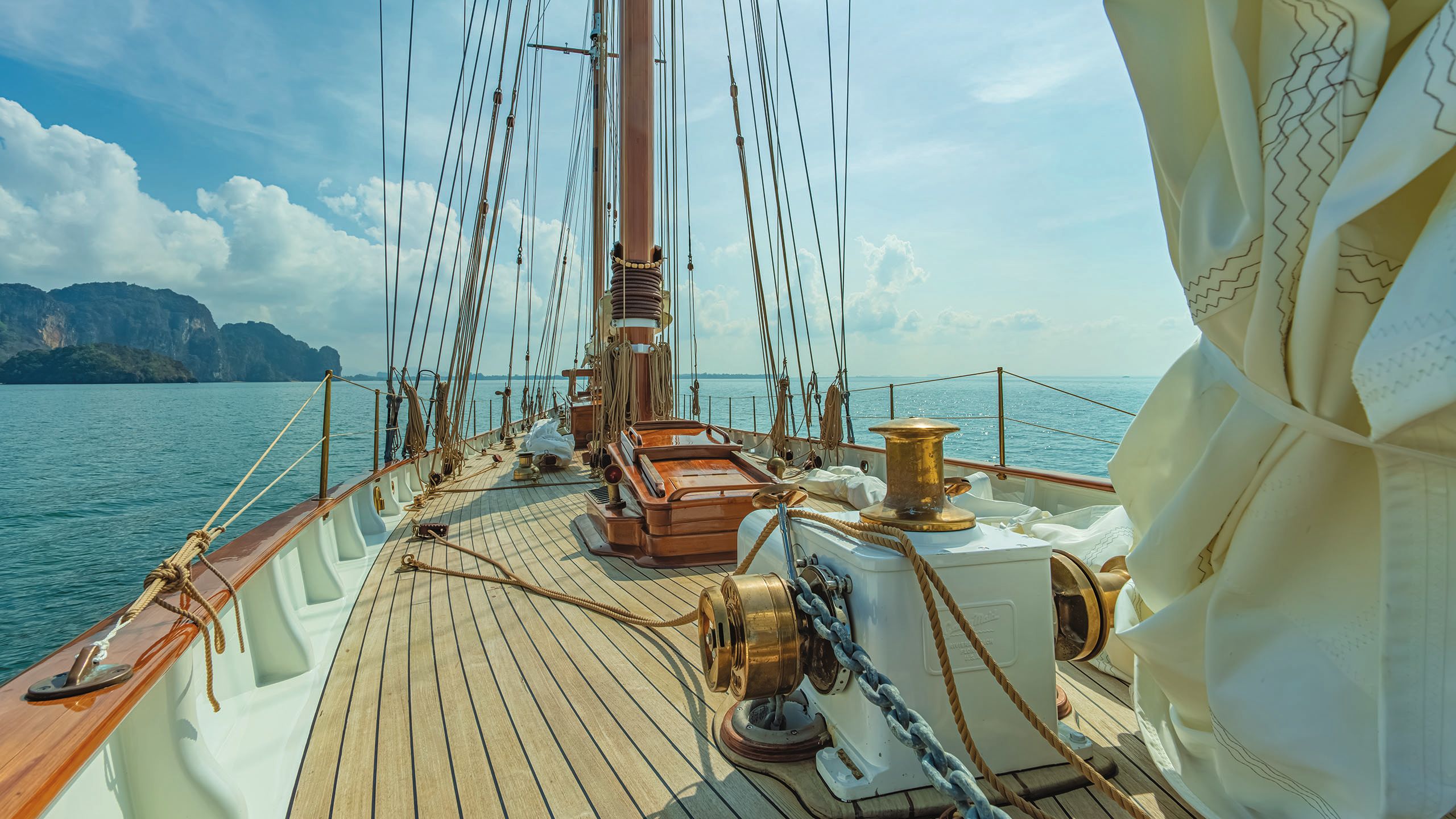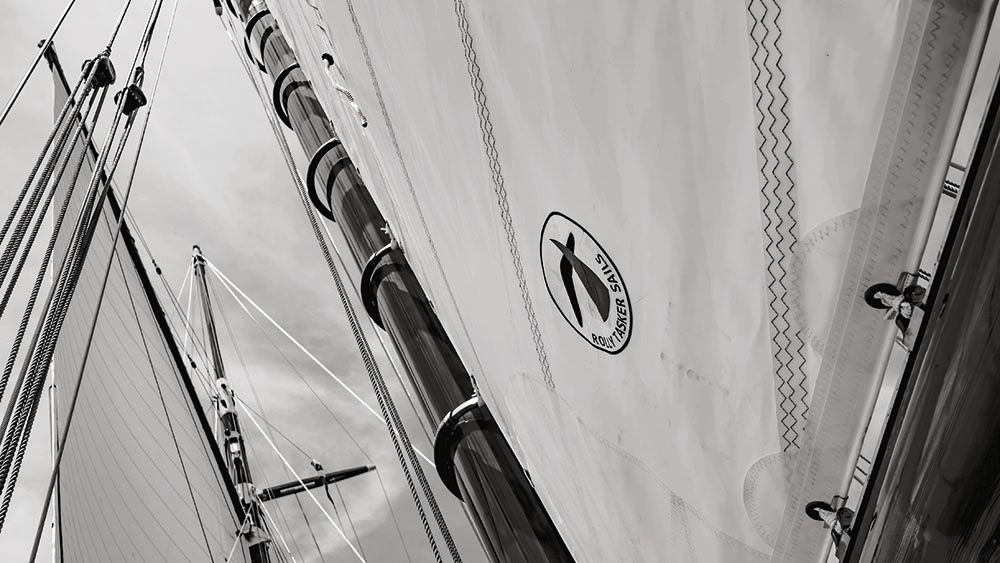I AM LEGEND
On board the 36m Summers & Payne yacht Cariad
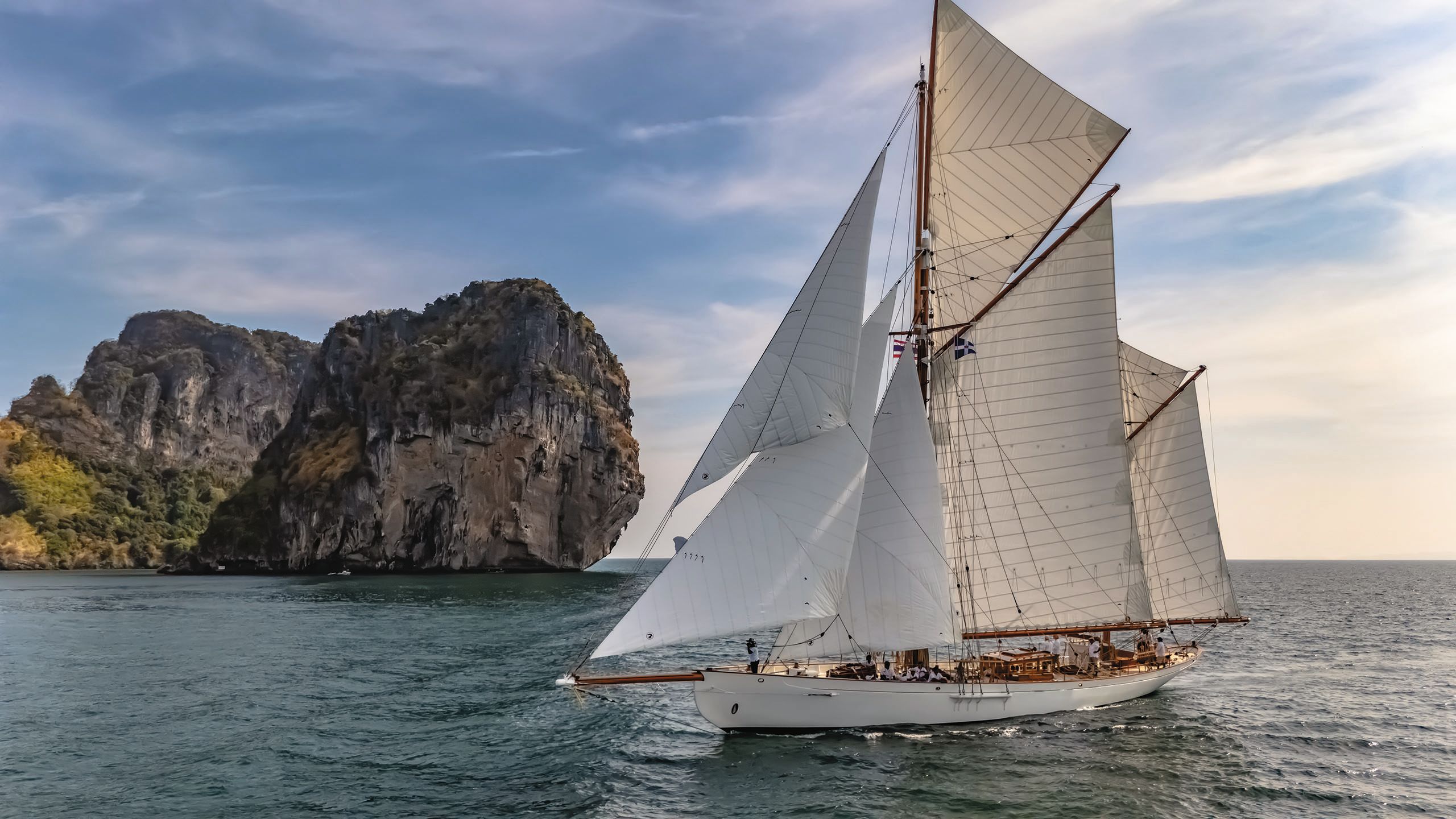
It took dedication and artistry to breathe new life into the gorgeous lines and rich woods of the Victorian cutter Cariad. Nigel Sharp discovers the passionate owner and unconventional team behind a profound refit
PHIL CLARK - HELICAM
Let’s build back better” is a slogan that has been used and abused by several politicians – most recently Joe Biden – but it was also adopted by the team that found itself restoring the 1896 ketch Cariad for the second time, barely 13 years after the first project. “We think the slogan was more appropriate for us than for Biden,” says Des Kearns, who was joint project manager for both refits – and he has a good case.
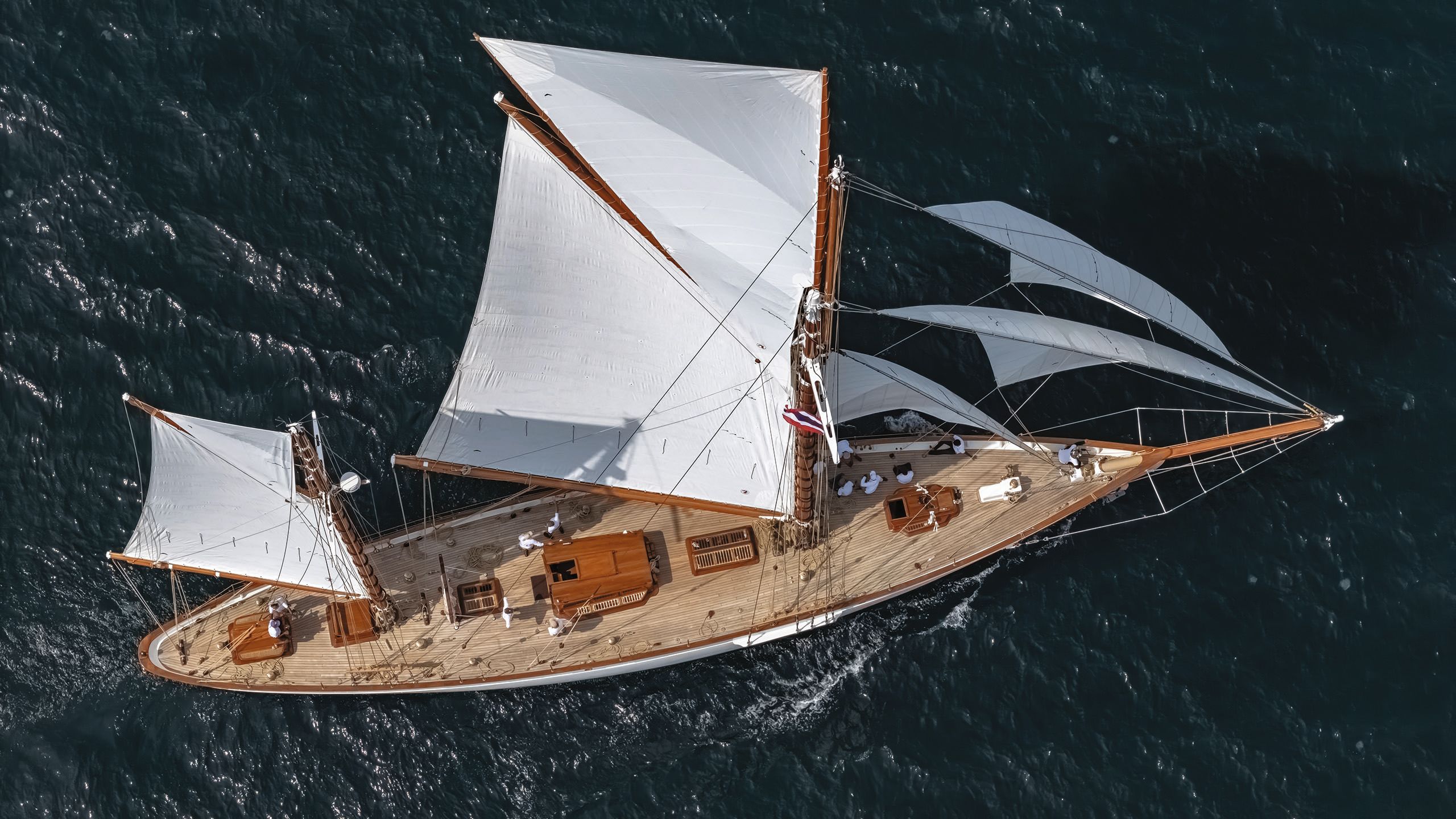
PHIL CLARK - HELICAMThe steering gear, fitted soon after Cariad was originally launched, has been refurbished
PHIL CLARK - HELICAMThe steering gear, fitted soon after Cariad was originally launched, has been refurbished
Cariad was designed by Arthur Payne and built in 1896 by Summers & Payne for Windham Thomas Wyndham-Quin, the 4th Earl of Dunraven. During his five-year ownership, Dunraven occasionally raced Cariad, without distinction, but more often he cruised on her. “The vessel has a roving commission,” reported The Yachtsman about one such cruise. “The noble earl, who is proceeding to sea for health as well as pleasure, having decided to go just where the wind will take him.”
PHIL CLARK - HELICAMThe steering gear, fitted soon after Cariad was originally launched, has been refurbished
PHIL CLARK - HELICAMThe steering gear, fitted soon after Cariad was originally launched, has been refurbished
In 1898 Cariad attended a regatta in Lisbon where – representing the Royal Yacht Squadron – she won the Vasco da Gama Cup, which marked the 400th anniversary of the explorer’s first voyage to India. After twice chartering Cariad to the theatrical impresario Richard D’Oyly Carte, Dunraven put her on the market when he commissioned Summers & Payne to produce a new, bigger Cariad.
Almost all the craftspeople who worked on the second restoration had also contributed to the first
In the following century she passed through the hands of many owners, scattered from South Africa to Japan, completing several circumnavigations (and was nearly wrecked on Easter Island), before eventually being abandoned in Asia.
In 2005 British businessman Stuart Williamson bought Cariad after he found her in a derelict state near Bangkok. He took her to Phithak Shipyard and Services (PSS), a small shipyard in southern Thailand where she was extensively restored.
PHIL CLARK - HELICAMAt the end of the second restoration, Cariad finally sailed for the first time in 30 years. She is making up for lost time on the race circuit
PHIL CLARK - HELICAMAt the end of the second restoration, Cariad finally sailed for the first time in 30 years. She is making up for lost time on the race circuit
The work was jointly project-managed by Australian Des Kearns and Thai Kanchala “Ked” Krissadaraksa, whose company Popeye Marine Services employed up to 55 predominantly Thai people to work on Cariad. The hull was virtually rebuilt with all the steel frames and almost all the planking being replaced (the latter in takhian thong, a naturally oily timber native to Laos that is harder than teak).
A great deal of work was also done to the decks, rig and interior, but in 2008 when she was “pretty well a perfect boat but not quite finished”, according to Kearns, Williamson was badly hit by the Global Financial Crisis and had to put her on the market.
PHIL CLARK - HELICAM
PHIL CLARK - HELICAM
PHIL CLARK - HELICAM
PHIL CLARK - HELICAM
PHIL CLARK - HELICAM
PHIL CLARK - HELICAM
The main saloon with what is thought to be the original table (top left). The forepeak, originally filled with pipe cots, now has more comfortable crew berths (top right). The main deckhouse (bottom)
Cariad was then purchased by a Singapore/Chinese national who kept her in Raffles Marina in Singapore. But for the next 13 years she was never used, never lifted out of the water and barely maintained.
“We managed to retain the gimballing mahogany saloon table, which we think might be original”
She deteriorated from the outside in – her underwater planking was eaten away by teredo worms – and from the inside out, a combination of the hot, humid climate and the lack of internal ventilation resulted in condensation pouring down the inside of the planking. She even sank on no fewer than three occasions, albeit, thanks to the limited depth of the marina, only by about a metre. “It was neglect, coupled with indifference,” says Kearns.
BOUNDERS ON BOARD
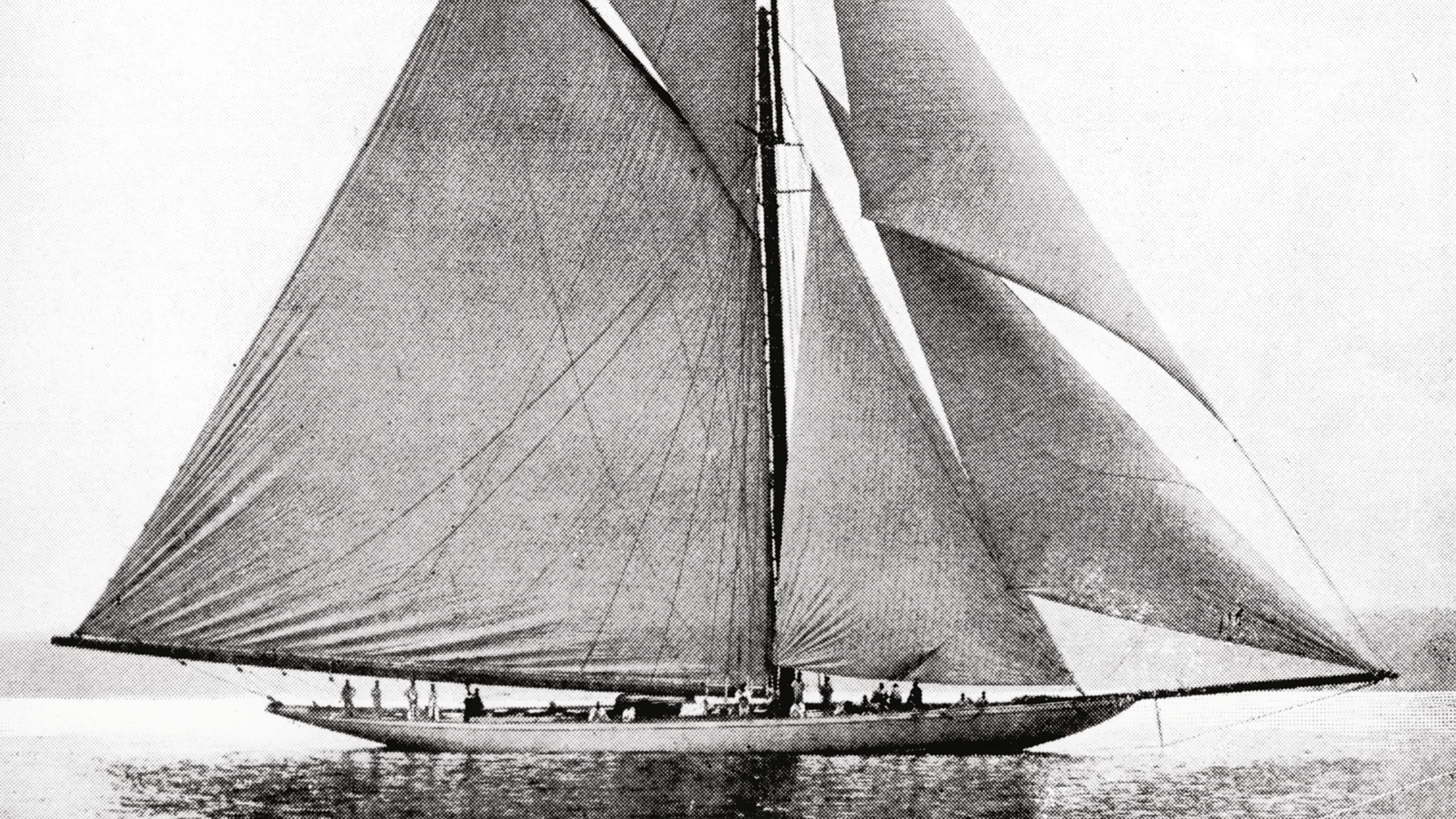
Barely a month after Cariad was launched in January 1896, her owner, Lord Dunraven, was expelled as an honorary member of the New York Yacht Club. The previous year he had challenged for the America’s Cup for a second time, with Valkyrie III, which was defeated 3-0 by the American boat Defender amidst considerable controversy.
After Defender won the first race comprehensively, Dunraven’s allegation that she had a significantly longer waterline length than shown in her measurement form was supposedly disproved. In the second race Valkyrie was disqualified after the end of her boom fouled Defender’s topmast stay at the start.
Dunraven bitterly disputed the disqualification and also complained about the abundance of intrusive spectator boats on the racecourse. To demonstrate his displeasure, Valkyrie headed back to port as soon as she crossed the start line for the third race, leaving Defender to sail the course and win the Cup.
THE PICTURE ART COLLECTION - ALAMY STOCK PHOTO Lord Dunraven
THE PICTURE ART COLLECTION - ALAMY STOCK PHOTO Lord Dunraven
HISTORIC COLLECTION - ALAMY STOCK PHOTOThe New York Yacht Club
HISTORIC COLLECTION - ALAMY STOCK PHOTOThe New York Yacht Club
The controversy continued throughout the following winter, with Dunraven repeating his allegations about Defender’s waterline length in the British press. Declaring that he had “forfeited the high esteem which led to his election” the New York Yacht Club set up an inquiry to consider his membership.
This prompted him to write: “I wish to say that in view of the fact that a motion of such a nature has been made…I do not desire to remain a member of the club, whatever the result of the motion may be.”
However, the inquiry ignored this and expelled him anyway, after a vote that was “hailed with shouts of acclamation, and carried with only one dissentient voice,” according to The Yachtsman magazine.
Barely a month after Cariad was launched in January 1896, her owner, Lord Dunraven, was expelled as an honorary member of the New York Yacht Club. The previous year he had challenged for the America’s Cup for a second time, with Valkyrie III (above), which was defeated 3-0 by the American boat Defender amidst considerable controversy.
After Defender won the first race comprehensively, Dunraven’s allegation that she had a significantly longer waterline length than shown in her measurement form was supposedly disproved. In the second race Valkyrie was disqualified after the end of her boom fouled Defender’s topmast stay at the start.
THE PICTURE ART COLLECTION - ALAMY STOCK PHOTO Lord Dunraven
THE PICTURE ART COLLECTION - ALAMY STOCK PHOTO Lord Dunraven
Dunraven bitterly disputed the disqualification and also complained about the abundance of intrusive spectator boats on the racecourse. To demonstrate his displeasure, Valkyrie headed back to port as soon as she crossed the start line for the third race, leaving Defender to sail the course and win the Cup.
The controversy continued throughout the following winter, with Dunraven repeating his allegations about Defender’s waterline length in the British press. Declaring that he had “forfeited the high esteem which led to his election” the New York Yacht Club set up an inquiry to consider his membership.
HISTORIC COLLECTION - ALAMY STOCK PHOTOThe New York Yacht Club
HISTORIC COLLECTION - ALAMY STOCK PHOTOThe New York Yacht Club
This prompted him to write: “I wish to say that in view of the fact that a motion of such a nature has been made…I do not desire to remain a member of the club, whatever the result of the motion may be.” However, the inquiry ignored this and expelled him anyway, after a vote that was “hailed with shouts of acclamation, and carried with only one dissentient voice,” according to The Yachtsman magazine.
Then, in 2021, along came Tim Hartnoll, chairman of shipping company X-Press Feeders, who bought Cariad and immediately commissioned PSS to carry out another restoration. An invaluable addition to the team was British naval architect Paul Spooner. This time about seven per cent of the frames and half of the planking had to be renewed, along with the stern post and stem.
“Because all of the joinery had to be removed to carry out this work, we took the opportunity to reconfigure the layout aft to incorporate an additional guest cabin and day head,” says Spooner.
The new interior is composed of teak panels and takhian thong framing, varnished with Epifanes and Awlwood; semigloss white painted overheads; teak soles; Corian worktops in the galley and heads; and Italian leather upholstery. “We managed to retain the gimballing mahogany saloon table which we think might be original,” says Kearns.
While the main mast was saved (after extensive repairs), the other 10 spars had to be replaced
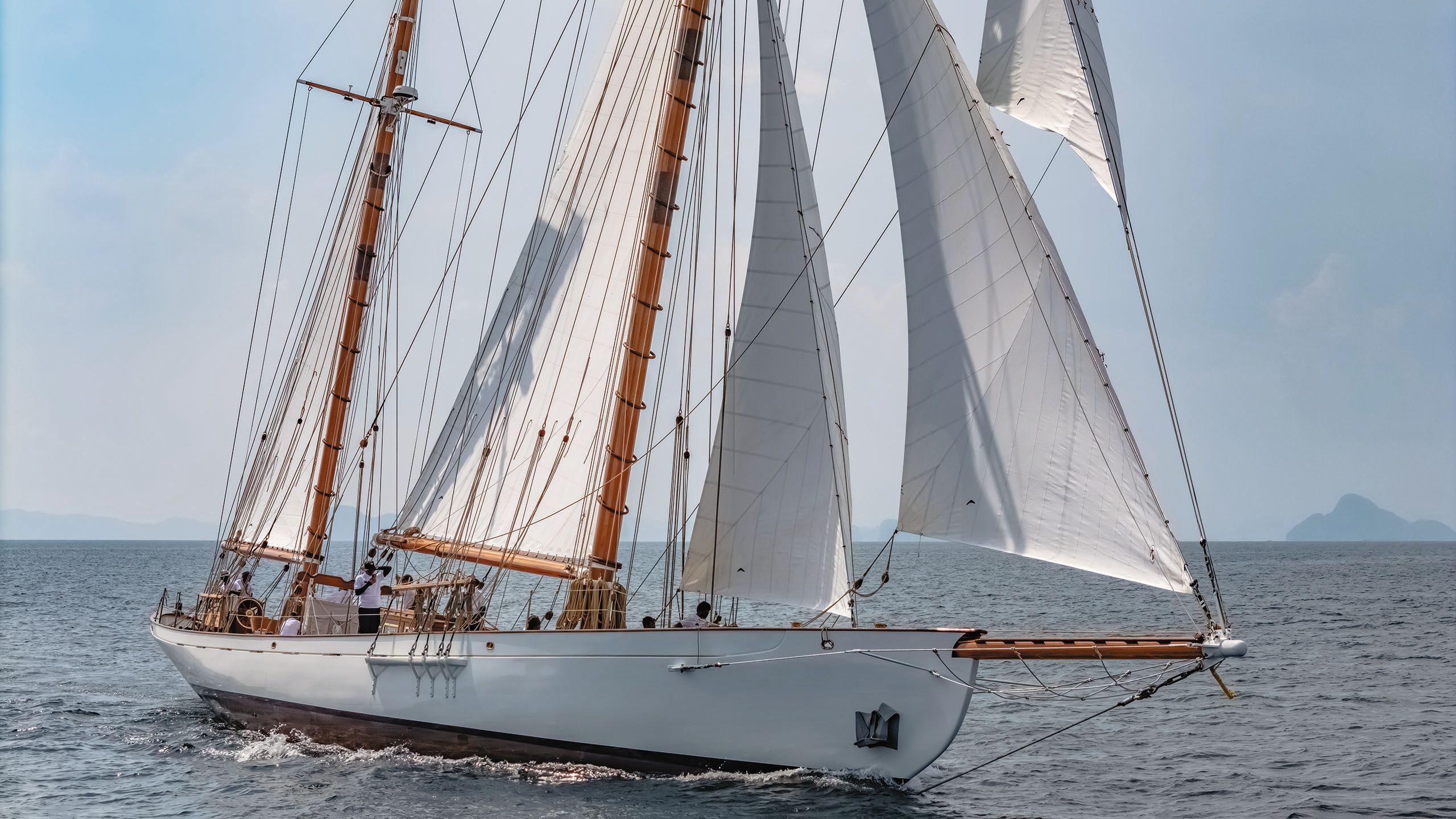
Many of the stainless-steel deck fittings were replaced with bronze ones, and new bronze winches were supplied by The Classic Winch Company. Cariad was originally built with a tiller “but”, says Spooner, “not surprisingly, within a few months it was found necessary to replace it with wheel steering”.
That steering gear has now been extensively refurbished and no longer has any slack in it, and a Jefa autopilot has been installed. While the main mast was saved (but only after extensive repairs), the other 10 spars had to be replaced. New narrow-panelled sails were made by Rolly Tasker Sails in Phuket.
Cariad at the beginning of the first restoration in 2005, with project manager Des Kearns photographing some details
The Gardner 8LXB diesel engine had somehow survived its three sinkings, “and after it was thoroughly cleaned up it ran beautifully once again and now purrs like a kitten”, says Kearns.
She sank on no fewer than three occasions. “It was neglect coupled with indifference”
But otherwise, new machinery and systems were fitted throughout including a Kohler generator, Frigomar air-conditioning, a Raritan sewage treatment system, and an Aquamiser watermaker. The whole boat had to be rewired, partly due to water damage but also because the new layout determined that the main distribution board had to be relocated.
CARIAD'S PAST LIVES
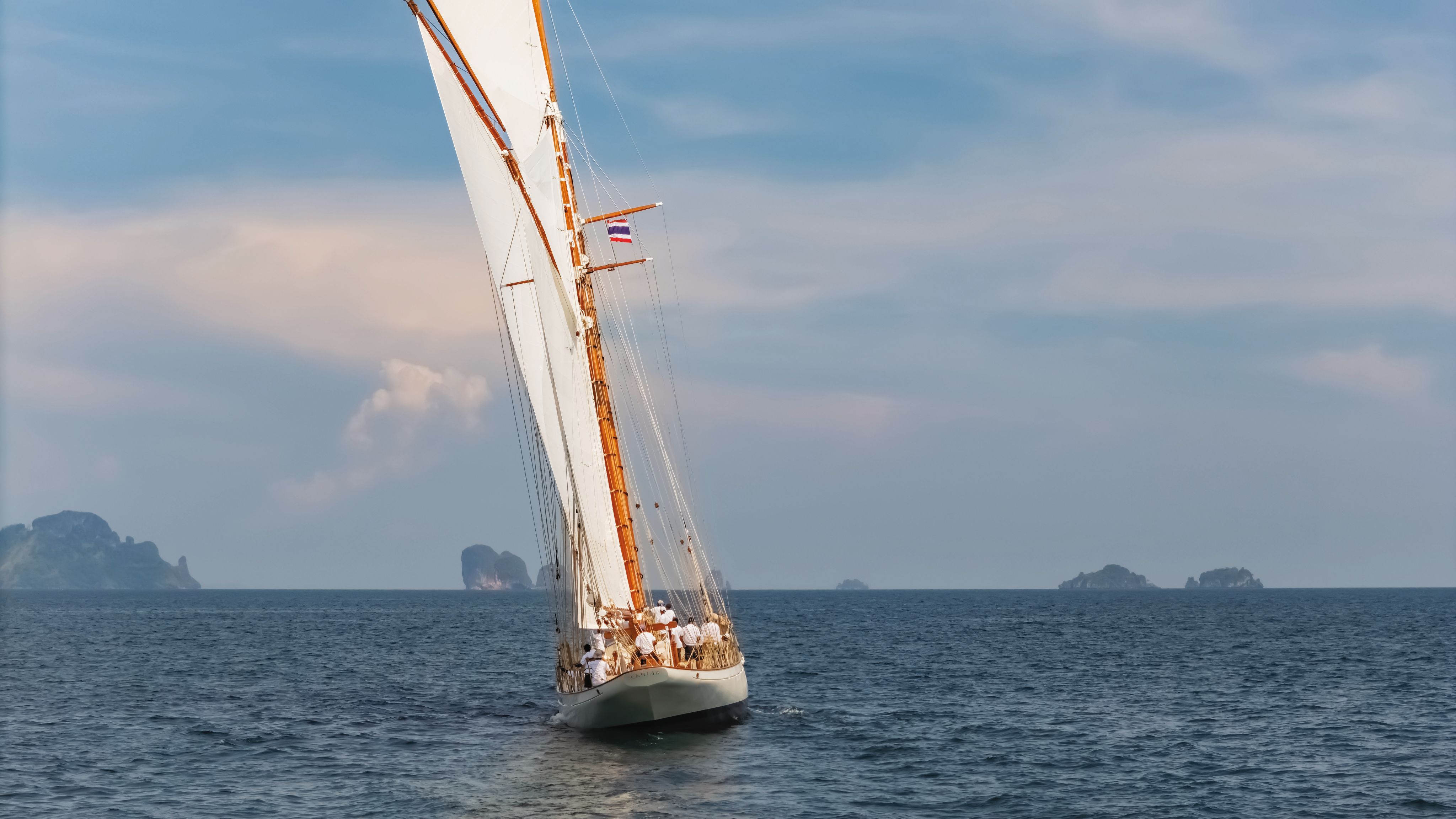
Following her build owner, Cariad was owned by JB Millar, who kept her in Essex and Kent; Captain CF Dixon-Johnson, a member of the Royal Yorkshire Yacht Club; Philip de Vilmorin, the president of the Société des Régates Cannoises, who took her to the Mediterranean; and Frank Chaplin who changed her name to Fidra, installed a Bergius 4-cylinder paraffin motor and raced her in Cowes Week in 1913.
Soon after the Great War ended Fidra was sold to brothers Sune and Sebastian Tamm, both Swedish naval officers who, in September 1920, set off with 10 other servicemen on a circumnavigation. From Karlskrona in Sweden they sailed south, through the Magellan Strait and Suez Canal, returning to Karlskrona after two years.

In 1924 she was sold at auction to Henry J Wenborn who took her to Cape Town. Cariad remained in South Africa with her next three owners – AW Flitton, Loring CM Rattray and Krasni Sutic. Flitton completed two world circumnavigations in her between 1949 and 1954, both of them starting and finishing in Cape Town, and each time via the Panama Canal and to the north of Australia.
On the first voyage he very nearly lost Cariad on a lee shore in Cook’s Bay, Easter Island, “not once but twice”, according to his great nephew, Trevor Richards. And in a 1954 article entitled “Cariad battered by Agulhas storm”, a local newspaper reported that she arrived home, “with her forward bulwarks carried away on starboard side, one of her lifeboats missing, and her mizzen gaff smashed.”

She eventually left South Africa in 1976 when she was bought by Seymour and Pamela Marvin, who lived in Rio de Janeiro. They took her to the West Indies and chartered her for several years before restoring her there. Cariad returned to England in 1983 and raced in Cowes Week before a charter season in Turkey.
She was then sold to a Japanese corporation and took part in the Yokohama Eeposition YES in 1989. Sometime after that she was abandoned in Singapore when her owners experienced financial difficulties, before being saved by the Japan Charter Yacht Association, which used her to promote charter sailing in Tokyo.
Almost all of the craftspeople who worked on the second restoration had also contributed to the first, and it is hard to imagine how soul destroying it must have been to see the appalling state of Cariad when she returned to the yard. “At first they were angry and disappointed,” says Kearns, “and we knew it was going to be very difficult to motivate them.
But then they just knuckled down and got on with it. As time went on, we got the spirits right up to normal levels. And the ‘build back better’ slogan wasn’t just empty words.”
PHIL CLARK - HELICAMStainless-steel deck fittings were replaced with bronze and Cariad sports new bronze winches
PHIL CLARK - HELICAMStainless-steel deck fittings were replaced with bronze and Cariad sports new bronze winches
But not only did the whole team feel a great deal of private satisfaction from getting the project finished – and this time seeing Cariad sail for the first time for 30 years – their efforts were also publicly recognised when she won the Classic Rebuilt Yachts category at the BOAT International World Superyacht Awards.
PHIL CLARK - HELICAMNew sails have been made by Rolly Tasker Sails in Phuket
PHIL CLARK - HELICAMNew sails have been made by Rolly Tasker Sails in Phuket
“I am absolutely delighted,” says Hartnoll who was in Venice, along with Spooner, to receive the award in May, “but mostly for Des, Ked and everyone who worked on the boat.”
This winter, Cariad will race in the Phuket King’s Cup Regatta; she will then come to the UK to take part in the Royal Thames Yacht Club’s 250th anniversary regatta in the Solent next year; and then she will be based in the Med where she will compete in some classic boat regattas. “I think that is where she belongs,” said Hartnoll.
First published in the November 2024 issue of BOAT International. Get this magazine sent straight to your door, or subscribe and never miss an issue.
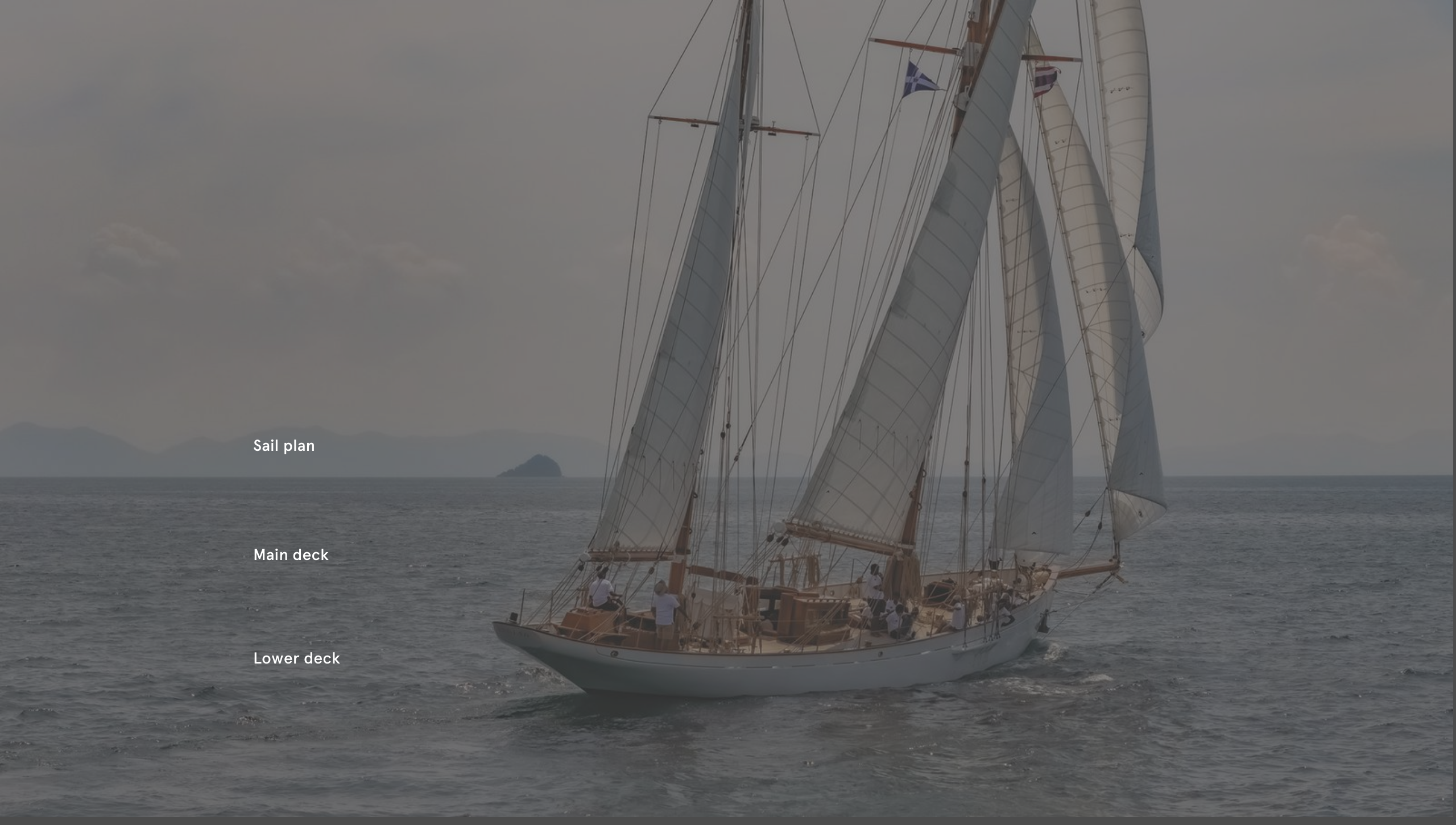

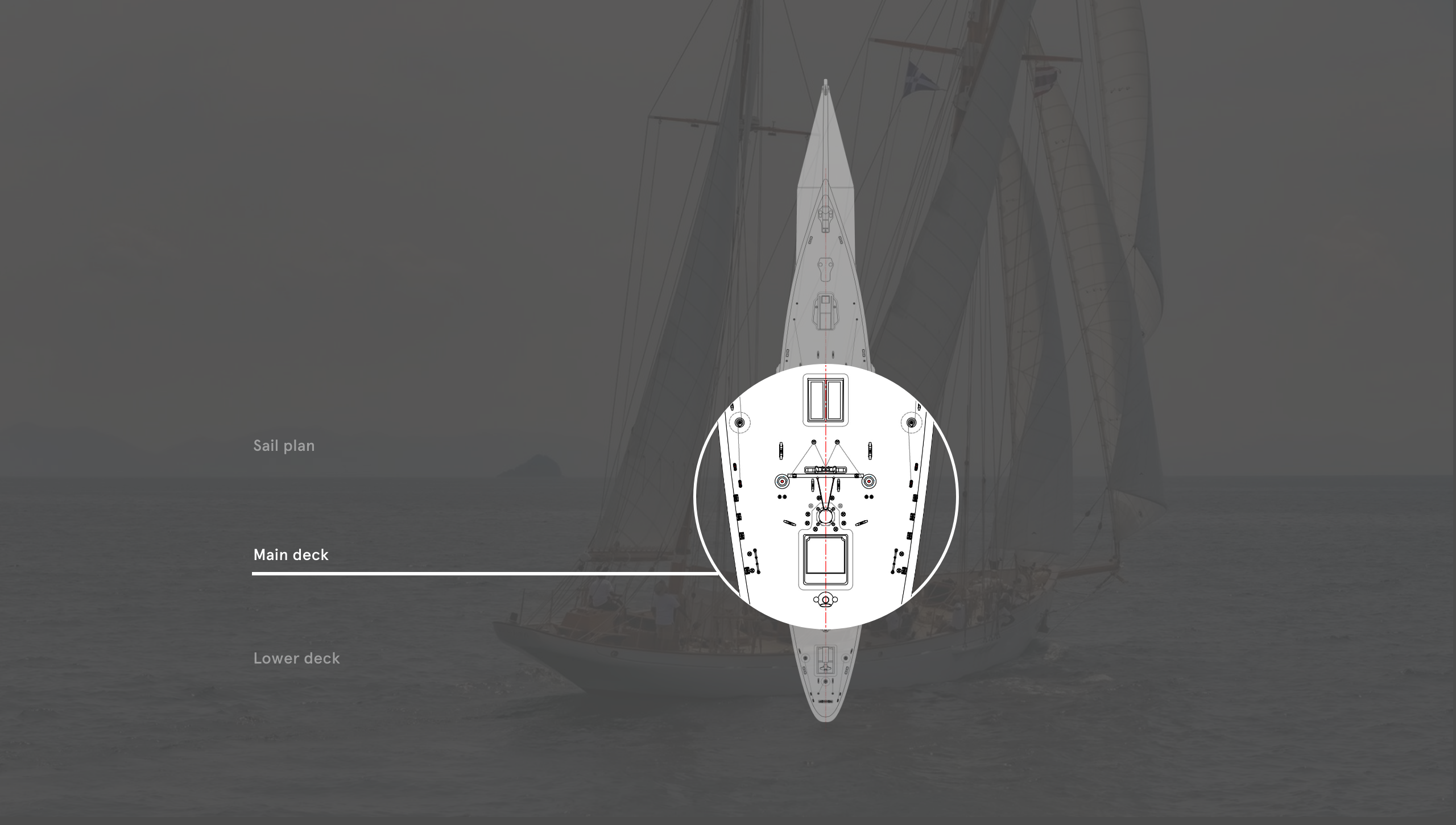
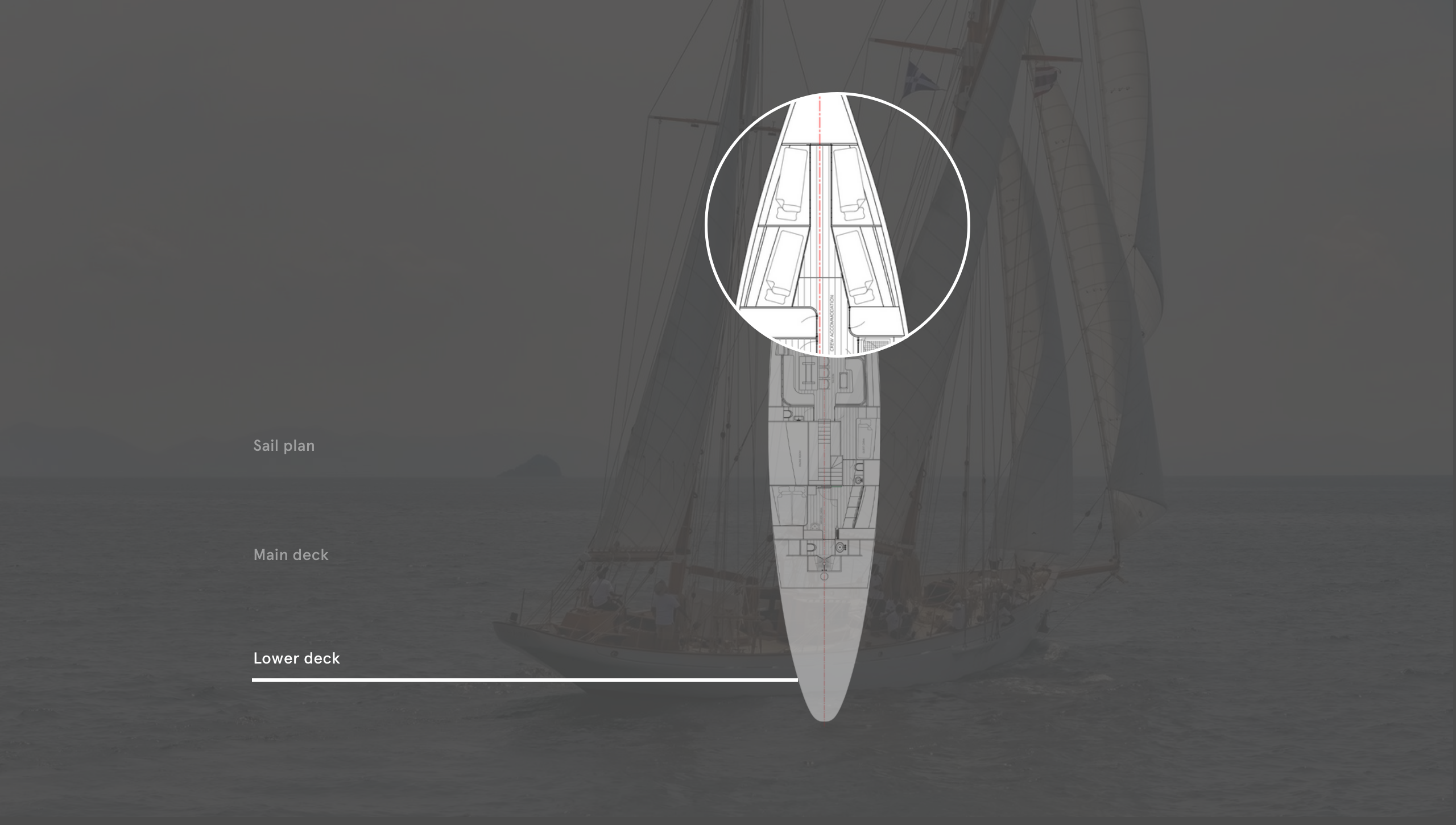
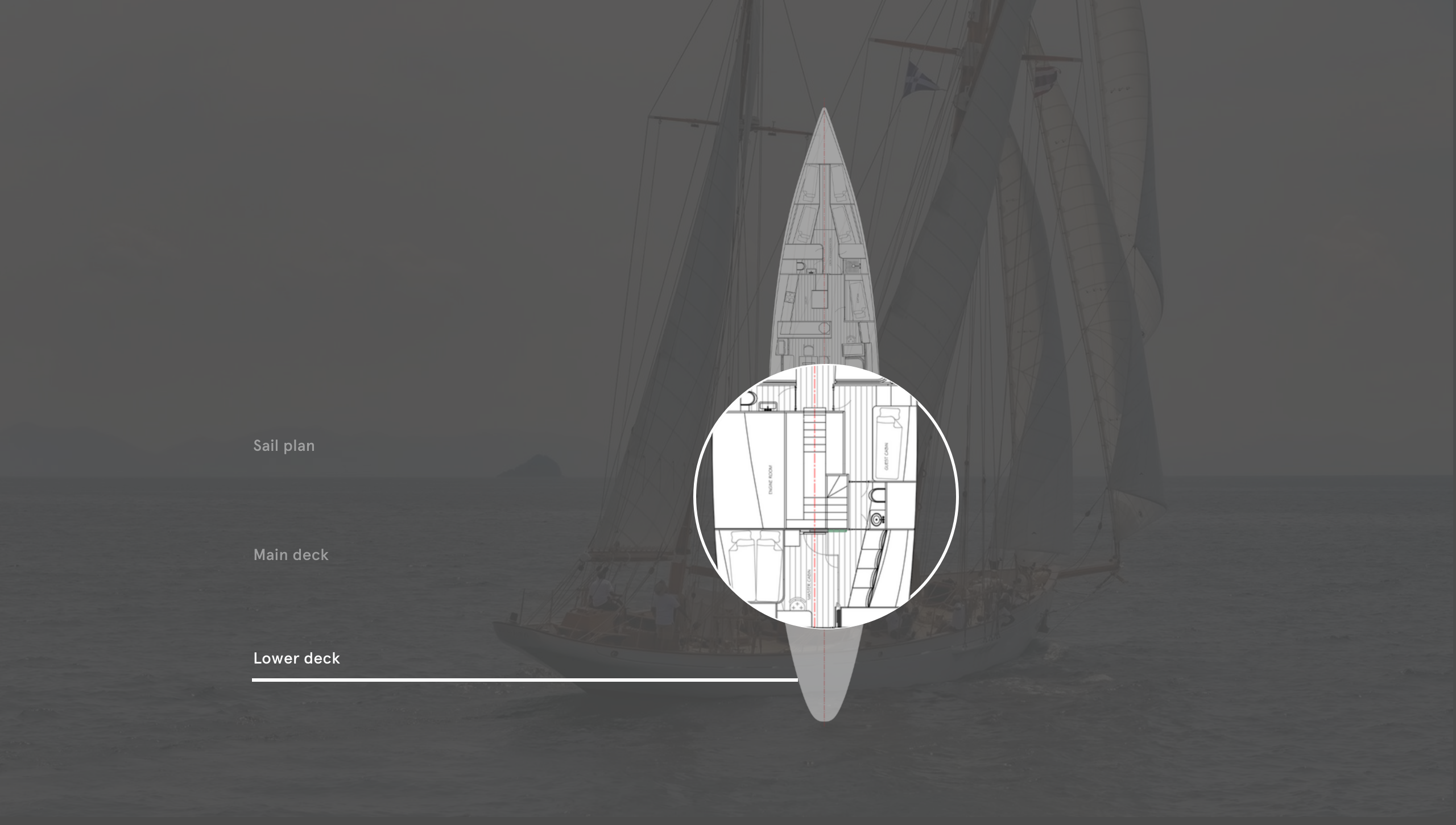
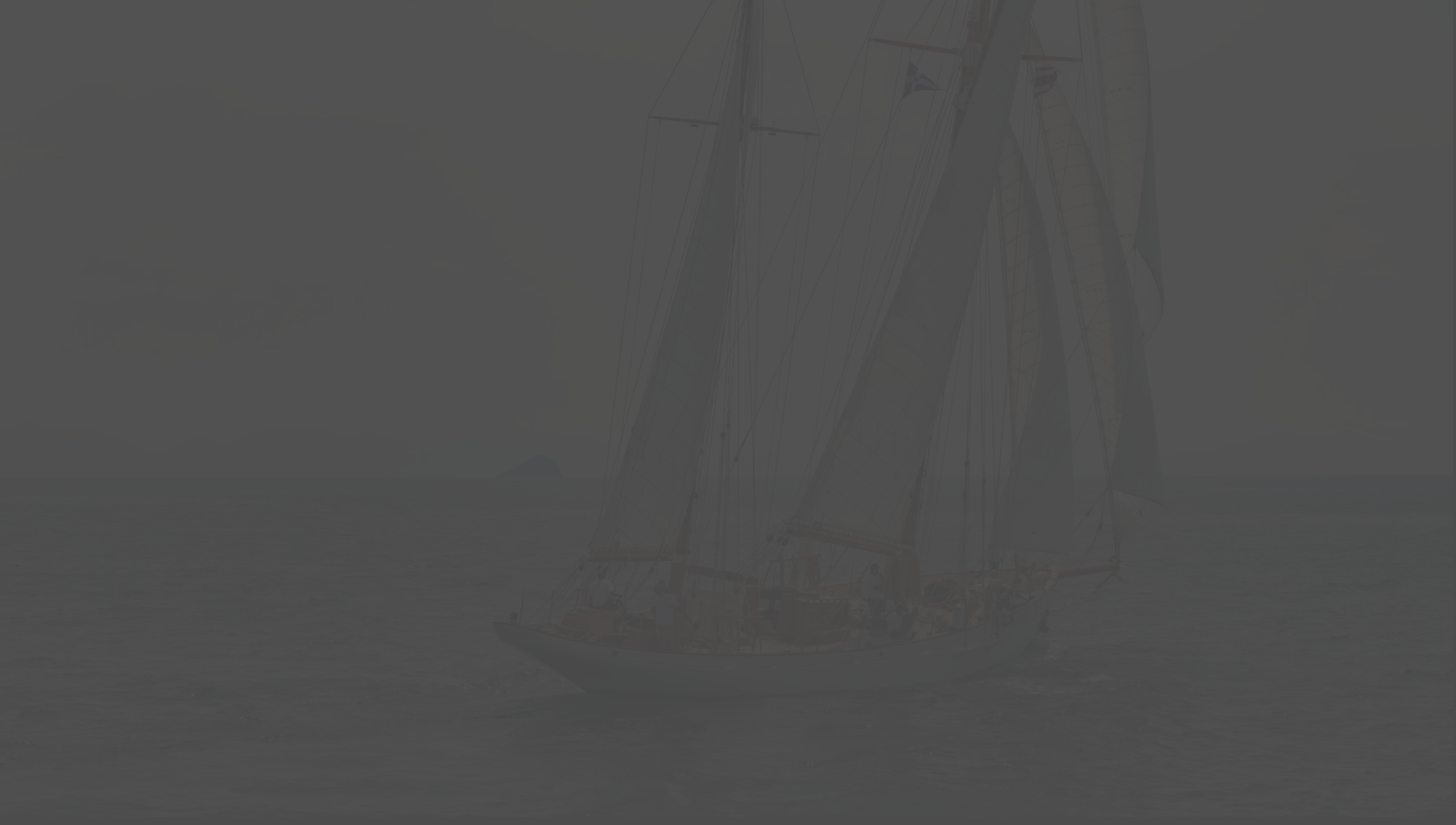
Out of 11 spars, only the main mast was able to be saved
Autopilot is a new addition
Proper berths for crew replaced pipe cots in the forepeak
The diesel engine survived three sinkings and lives on today
An extra guest cabin was fitted opposite the engine room
LOA 36m | Gross tonnage |
LWL 24.5m | Engines |
Beam 5.64m | Sail area |
Draught 3.6m | Sails |
Generator | Speed under power |
Fuel capacity | Owners/guests 6 |
Freshwater capacity | Crew 5 |
Tender | Construction |
Refit naval architecture | Builder/year |
Exterior styling | Refit yard/year |
Refit interior design | +66 74 772 622 |



